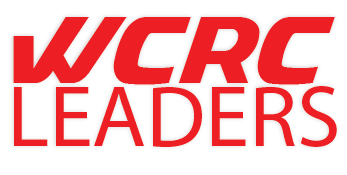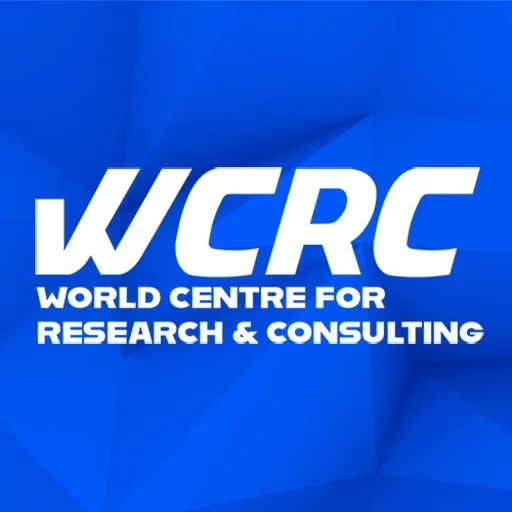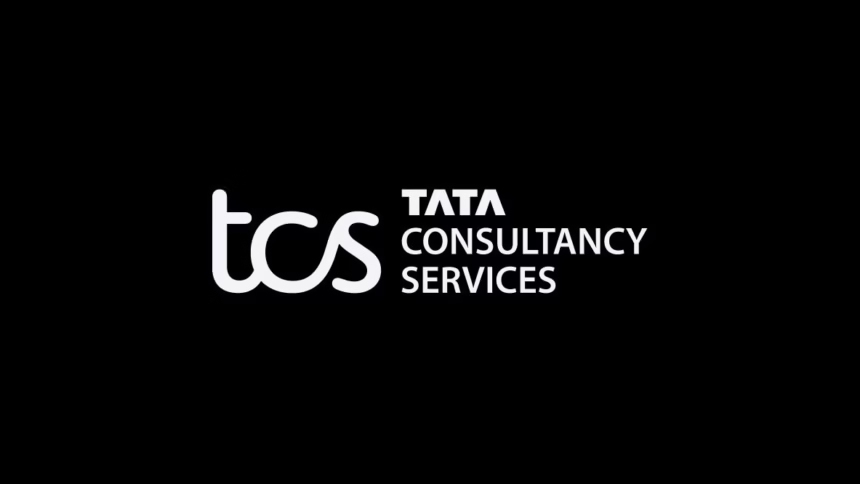
The Paramount Importance of Strategic Clarity
In the ever-evolving business landscape, a well-defined strategy serves as the compass guiding an organization towards its desired destination. However, even the most meticulously crafted plans can falter if they fail to resonate with the very individuals responsible for their execution – the employees. Numerous surveys have revealed a startling reality: a significant portion of employees struggle to recall or comprehend their organization’s strategic priorities.
This disconnect between leadership’s vision and employee understanding can have far-reaching consequences. Lack of strategic clarity can lead to misaligned efforts, wasted resources, and missed opportunities. Conversely, organizations that excel at communicating their strategies effectively foster a sense of purpose, alignment, and collective commitment towards shared goals.
- The Paramount Importance of Strategic Clarity
- In the ever-evolving business landscape, a well-defined strategy serves as the compass guiding an organization towards its desired destination. However, even the most meticulously crafted plans can falter if they fail to resonate with the very individuals responsible for their execution – the employees. Numerous surveys have revealed a startling reality: a significant portion of employees struggle to recall or comprehend their organization’s strategic priorities.
- Section 2: Overcoming the Barriers to Effective Strategy Communication
- Section 3: The Holistic Approach: Engaging Stakeholders Comprehensively
- Section 4: Personalizing the Strategic Narrative
- Section 5: Matching the Message to the Moment
- Section 6: Fostering Transparency and Empowerment
- Section 7: Maintaining Strategic Visibility and Momentum
- Section 8: Nurturing Doubters and Embracing Diverse Perspectives
- Section 9: Cultivating a Culture of Strategic Agility
- Section 10: Leveraging Technology for Seamless Strategy Communication
- Section 11: Aligning Performance Management with Strategic Priorities
- Section 12: Fostering a Culture of Continuous Learning and Adaptation
- Section 13: Measuring the Effectiveness of Strategy Communication
- Section 14: Fostering Cross-Functional Collaboration and Knowledge Sharing
- Section 15: Celebrating Strategic Milestones and Successes
- Section 16: Fostering a Culture of Strategic Storytelling
- Section 17: Leveraging External Communication Channels
- Section 18: Embracing Diversity and Inclusive Communication
- Section 19: Integrating Sustainability and Corporate Social Responsibility
- Section 20: Embracing Digital Transformation and Innovation
Section 2: Overcoming the Barriers to Effective Strategy Communication
Communicating a strategy is a multifaceted challenge that demands a comprehensive approach. Leaders often grapple with the inherent complexities of distilling intricate strategic decisions into digestible narratives. The wealth of data, market dynamics, and implicit knowledge that shaped the strategic choices can be challenging to convey in its entirety.
Moreover, the traditional methods of strategy communication – lengthy presentations or bland statements – frequently fail to capture the imagination and engagement of employees. These one-dimensional approaches often leave individuals feeling disconnected from the overarching vision and uncertain about their roles in its realization.

Section 3: The Holistic Approach: Engaging Stakeholders Comprehensively
Effective strategy communication necessitates a holistic approach that engages stakeholders at all levels, both internally and externally. This comprehensive approach encompasses several key elements:
- Visualizing the Ambition: Spark imagination and excitement by painting a vivid picture of the organization’s aspirations and the opportunities that lie ahead. This initial step sets the stage for the strategic journey.
- Describing the Desired Impact: Articulate the intended contribution of the strategy to customers, stakeholders, and the broader ecosystem. Highlight how the organization aims to create value and drive positive change.
- Challenging the Status Quo: Encourage employees to embrace a new mindset by highlighting the limitations of the current approach and the merits of exploring alternative paths.
- Instilling Belief: Communicate confidence in the organization’s capabilities while acknowledging the need for adaptation and change.
- Focusing Attention: Empower individuals to make informed decisions about where to allocate their time and efforts by providing clear strategic priorities.
- Outlining Transformations: Highlight the necessary investments, resource reallocations, and operational shifts required to execute the strategy successfully.
- Establishing Metrics: Define measurable behaviors, activities, and outcomes that will serve as benchmarks for evaluating strategic progress.
- Explaining the Rationale: Build credibility and confidence by sharing the data, assumptions, and thought processes that underpinned the strategic choices.
- Describing the Process: Instill trust by transparently communicating the inclusive and collaborative approach adopted during strategy development.
By addressing these comprehensive elements, organizations can foster a shared understanding of the strategic vision, the rationale behind it, and the collective effort required to bring it to fruition.
Section 4: Personalizing the Strategic Narrative
Effective strategy communication goes beyond merely presenting corporate objectives; it requires tailoring the narrative to resonate with individual employees. Leaders must demonstrate their unwavering commitment to the strategy through their actions, decisions, and allocation of time and resources.
Moreover, it is crucial to articulate the specific activities, capabilities, and behaviors that enable the strategy’s execution. Pilot initiatives and training programs can help employees develop the necessary skills and mindsets, while addressing nostalgia, fears, or bureaucratic hurdles that might hinder progress.
By personalizing the strategic narrative, organizations can bridge the gap between high-level aspirations and individual contributions, fostering a sense of ownership and accountability among employees.
Section 5: Matching the Message to the Moment
Strategy communication should be a dynamic and engaging process, not a one-time event. Leaders must carefully map out the critical moments when strategic messaging needs to be reinforced, such as during recruitment interviews, investor pitches, board meetings, town halls, team huddles, or performance appraisals.
At each of these pivotal moments, the messaging should be tailored to emphasize specific aspects of the strategy that resonate most with the audience. For instance, when engaging with potential partners, the focus might be on the ambition and opportunities ahead, while with managers, the emphasis could be on the strategic choices made and the changes required.
Furthermore, organizations should leverage a diverse array of communication tools and assets, ranging from concise elevator pitches and anecdotes for one-on-one conversations to visually compelling presentations and interactive exercises for larger group settings.
By matching the message to the moment and employing the most effective communication channels, organizations can ensure that their strategic narrative remains vivid, relevant, and impactful across various touchpoints.
Section 6: Fostering Transparency and Empowerment
Effective strategy communication thrives on transparency and inclusivity. Organizations should strive to share as much strategic information as possible, including the rationale behind critical decisions, assumptions made, and uncertainties faced.
By creating open channels for feedback, ideas, and constructive challenges, organizations can tap into the collective intelligence of their workforce and foster a sense of ownership and advocacy for the strategy.
Empowering employees to contribute to the strategy’s development and implementation can take various forms, such as crowdsourcing events, strategy workshops, or dedicated communication platforms. This inclusive approach not only enhances the quality and relevance of the strategy but also cultivates a culture of collaboration and shared responsibility.
Furthermore, by involving employees from diverse functional areas and hierarchical levels, organizations can broaden the understanding of the strategy’s context and nuances, facilitating more effective communication and execution.
Section 7: Maintaining Strategic Visibility and Momentum
Communicating the strategy is not a one-time event; it is an ongoing process that requires sustained effort and visibility. Organizations should establish clear sequences of communication tailored to different stakeholder groups, ensuring consistency and reinforcement of key messages.
Regular progress updates, milestone celebrations, and success stories can help maintain momentum and motivate employees by showcasing tangible achievements along the strategic journey. Leveraging technology, such as strategy software, dashboards, and automatic reporting, can enhance the visibility and accessibility of strategic progress, enabling employees to stay informed and engaged.
Furthermore, encouraging feedback, discussion, and collaboration around the strategy can foster a sense of ownership and continuous improvement. Managers play a crucial role in this process, serving as strategy champions who reinforce priorities, translate objectives into actionable tasks, and integrate strategic discussions into everyday team interactions.
By maintaining strategic visibility and momentum, organizations can embed the strategy into the fabric of their operations, ensuring that it remains a living, breathing guide for collective action.
Section 8: Nurturing Doubters and Embracing Diverse Perspectives
Despite best efforts, some individuals may express reservations or doubts about the strategy. Rather than dismissing these concerns, leaders should proactively seek out and engage with these voices, fostering an environment of open dialogue and mutual understanding.
By actively listening to feedback and addressing concerns with empathy and transparency, organizations can identify potential blind spots, uncover valuable insights, and potentially refine or clarify aspects of the strategy. This inclusive approach not only demonstrates respect for diverse perspectives but also strengthens the overall strategic narrative by addressing potential sources of resistance or misunderstanding.
Moreover, nurturing doubters can help mitigate the spread of negativity and foster a sense of ownership among those who initially expressed skepticism. When individuals feel heard and valued, they are more likely to embrace the strategy, even if they do not fully agree with every aspect of it.
Section 9: Cultivating a Culture of Strategic Agility
In today’s rapidly changing business landscape, strategies cannot remain static; they must evolve and adapt to emerging trends, disruptive forces, and shifting market dynamics. Consequently, strategy communication should be an iterative process that incorporates continuous learning and refinement.
Organizations should actively monitor weak signals of change, both internally and externally, and adjust their communication strategies accordingly. This agility allows for timely course corrections, reinforcing the resilience and relevance of the strategic narrative.
Furthermore, by fostering a culture of strategic agility, organizations can encourage employees to proactively identify opportunities for improvement, propose innovative solutions, and contribute to the ongoing refinement of the strategy. This collaborative approach not only enhances the strategy’s robustness but also cultivates a workforce that is adaptable, innovative, and aligned with the organization’s long-term vision.
Section 10: Leveraging Technology for Seamless Strategy Communication
In the digital age, technology plays a pivotal role in facilitating seamless and effective strategy communication. Organizations can leverage a range of tools and platforms to enhance accessibility, engagement, and collaboration around their strategic narratives.
Strategy management software, for instance, can serve as a centralized repository for the strategic plan, progress updates, and related resources. With built-in communication feeds and commenting features, these platforms encourage employee participation, feedback, and idea-sharing, fostering a sense of ownership and collective responsibility.
Additionally, organizations can leverage artificial intelligence (AI) and natural language processing (NLP) technologies to conduct interactive surveys and dialogues with employees, gathering insights and feedback at scale. These technologies can help uncover nuanced perspectives, identify areas of confusion or resistance, and inform targeted communication strategies.
Furthermore, data visualization tools and dashboards can present strategic metrics, progress updates, and success stories in visually compelling and easily digestible formats, enhancing transparency and facilitating data-driven decision-making.
By integrating technology into their strategy communication efforts, organizations can streamline information sharing, foster collaboration, and ensure that their strategic narratives remain dynamic, engaging, and accessible to all stakeholders.
Section 11: Aligning Performance Management with Strategic Priorities
Effective strategy communication extends beyond mere information dissemination; it requires embedding strategic priorities into the very fabric of organizational processes and practices. One crucial area where this alignment is essential is performance management.
By explicitly linking individual and team goals, objectives, and incentives to the overarching strategic priorities, organizations can foster a sense of purpose and accountability among employees. This alignment ensures that daily tasks, projects, and initiatives are consistently aligned with the strategic vision, reinforcing the relevance and importance of the strategy in tangible ways.
Furthermore, incorporating strategic contributions into performance evaluations and recognition programs can incentivize employees to actively engage with the strategy and prioritize activities that drive its execution. This reinforcement mechanism not only motivates employees but also serves as a powerful communication tool, consistently reminding them of the organization’s strategic direction and their role in achieving it.
Section 12: Fostering a Culture of Continuous Learning and Adaptation
Effective strategy communication is not a one-time endeavor but rather an ongoing journey of continuous learning and adaptation. Organizations should embrace a growth mindset, actively seeking feedback, analyzing successes and failures, and identifying opportunities for improvement.
By fostering a culture of continuous learning, organizations can refine their communication strategies, experiment with new approaches, and adapt to changing circumstances and evolving employee needs. This iterative process not only enhances the effectiveness of strategy communication but also cultivates a workforce that is agile, resilient, and committed to continuous improvement.
Moreover, organizations should invest in ongoing training and development programs that equip employees with the necessary skills and knowledge to effectively understand, communicate, and execute the strategy. These programs can cover a range of topics, such as strategic thinking, change management, communication techniques, and leadership development, ensuring that employees at all levels are equipped to contribute to the organization’s strategic success.
By fostering a culture of continuous learning and adaptation, organizations can ensure that their strategy communication efforts remain relevant, engaging, and aligned with the ever-changing business landscape, driving sustained organizational growth and success.
Section 13: Measuring the Effectiveness of Strategy Communication
Assessing the effectiveness of strategy communication is crucial for identifying areas of improvement and refining communication strategies. Organizations should establish clear metrics and Key Performance Indicators (KPIs) to evaluate the impact of their communication efforts.
These metrics may include employee engagement surveys, strategy awareness assessments, participation rates in strategy-related discussions or initiatives, and alignment between individual and organizational goals. Additionally, organizations can leverage data analytics and sentiment analysis tools to gauge employee sentiment and identify potential areas of confusion or resistance.
By regularly measuring and analyzing these metrics, organizations can gain valuable insights into the strengths and weaknesses of their strategy communication efforts. This data-driven approach enables organizations to make informed decisions, allocate resources effectively, and continuously optimize their communication strategies for maximum impact.
Moreover, sharing these metrics with employees can foster transparency and accountability, reinforcing the organization’s commitment to effective strategy communication and fostering a culture of continuous improvement.
Section 14: Fostering Cross-Functional Collaboration and Knowledge Sharing
Effective strategy communication often requires cross-functional collaboration and knowledge sharing. By breaking down silos and fostering open communication channels across departments and functional areas, organizations can ensure that strategic priorities and initiatives are understood and embraced holistically.
Cross-functional teams or strategy ambassadors can play a pivotal role in facilitating this collaboration. These teams can serve as conduits for sharing best practices, addressing challenges, and aligning efforts across the organization. They can also help identify potential synergies, streamline processes, and promote a cohesive understanding of the strategy’s implications for different business units or functions.
Furthermore, organizations can leverage internal communication platforms, knowledge-sharing repositories, and collaborative workspaces to facilitate the exchange of ideas, insights, and experiences related to strategy communication and execution. These platforms not only foster knowledge sharing but also encourage peer-to-peer learning, mentoring, and the development of a strong strategic mindset across the organization.
By fostering cross-functional collaboration and knowledge sharing, organizations can ensure that their strategy communication efforts are coordinated, consistent, and tailored to the unique needs and perspectives of different stakeholder groups, ultimately driving organizational alignment and strategic success.
Section 15: Celebrating Strategic Milestones and Successes
Effective strategy communication is not just about conveying information; it is also about inspiring, motivating, and celebrating collective achievements. By recognizing and celebrating strategic milestones and successes, organizations can reinforce the importance of the strategy, foster a sense of pride and accomplishment, and maintain momentum throughout the execution journey.
These celebrations can take various forms, such as town hall meetings, team events, recognition programs, or even simple acknowledgments in internal communications. Sharing success stories and highlighting the contributions of individuals and teams can not only boost morale but also serve as powerful examples of what it means to live and breathe the organization’s strategic priorities.
Moreover, celebrating strategic successes can reinforce the organization’s commitment to transparency and accountability, demonstrating that progress is being made and that collective efforts are yielding tangible results. This positive reinforcement can further motivate employees to remain engaged and committed to the strategy’s execution.
By incorporating strategic celebrations into their communication efforts, organizations can create a culture of achievement, foster a sense of shared purpose, and ensure that the strategy remains a source of inspiration and pride for all stakeholders.
Section 16: Fostering a Culture of Strategic Storytelling
Effective strategy communication often goes beyond mere data and facts; it involves crafting compelling narratives that resonate with employees on an emotional level. By fostering a culture of strategic storytelling, organizations can bring their strategic vision to life, making it more relatable, memorable, and inspiring.
Strategic storytelling can take various forms, such as sharing personal anecdotes, highlighting customer success stories, or weaving historical milestones into the narrative. These stories can help employees understand the “why” behind the strategy, connect with the organization’s values and purpose, and visualize the impact their efforts can have on customers, communities, and the broader ecosystem.
Furthermore, strategic storytelling can be a powerful tool for fostering a sense of shared identity and culture within the organization. By sharing stories that celebrate the organization’s heritage, values, and achievements, leaders can cultivate a sense of pride and belonging among employees, further reinforcing their commitment to the strategic vision.
To foster a culture of strategic storytelling, organizations can provide training and resources to help leaders and managers develop their storytelling skills. They can also encourage employees to share their own stories and experiences related to the strategy, creating a collaborative and inclusive narrative that resonates across all levels of the organization.
By embracing strategic storytelling, organizations can transform their strategy communication efforts into an engaging and emotionally resonant experience, fostering a deeper connection between employees and the organization’s strategic vision.
Section 17: Leveraging External Communication Channels
While internal strategy communication is crucial for fostering alignment and engagement within the organization, effective strategy communication also extends to external stakeholders. By leveraging external communication channels, organizations can reinforce their strategic narrative, build credibility, and foster a deeper understanding of their vision and priorities among customers, partners, investors, and the broader community.
External communication channels can include corporate websites, social media platforms, press releases, industry events, and thought leadership content. By consistently communicating their strategic priorities and initiatives through these channels, organizations can showcase their commitment to transparency, establish themselves as industry leaders, and attract like-minded partners and talent.
Furthermore, external strategy communication can serve as a powerful tool for stakeholder engagement and relationship building. By actively listening to feedback and addressing concerns from external stakeholders, organizations can identify potential blind spots, gather valuable insights, and refine their strategic approach to better align with the needs and expectations of their broader ecosystem.
Effective external strategy communication requires a cohesive and coordinated approach that aligns with the organization’s internal communication efforts. By maintaining consistency and authenticity across all communication channels, organizations can reinforce their strategic narrative, build trust and credibility, and foster a deeper understanding and appreciation for their vision and priorities among all stakeholders.
Section 18: Embracing Diversity and Inclusive Communication
In today’s increasingly diverse and global business landscape, effective strategy communication must embrace inclusivity and cater to a wide range of cultural backgrounds, perspectives, and communication styles. By fostering an inclusive communication approach, organizations can ensure that their strategic narrative resonates with all employees, regardless of their backgrounds or identities.
Inclusive communication strategies should take into account factors such as language barriers, cultural nuances, and accessibility considerations. Organizations can leverage translation services, multilingual communication channels, and inclusive visual representations to ensure that their strategic messaging is accessible and relatable to a diverse workforce.
Additionally, organizations should foster an environment that encourages open dialogue and embraces diverse perspectives. By actively seeking input from employees with different backgrounds and experiences, leaders can gain valuable insights and identify potential blind spots or biases in their strategic approach. This inclusive mindset not only enhances the quality and relevance of the strategy but also fosters a sense of belonging and empowerment among employees, further strengthening their commitment to the organization’s vision.
To effectively implement inclusive communication strategies, organizations should provide training and resources to help leaders and managers develop cultural competence and inclusive communication skills. They can also leverage employee resource groups, diversity councils, or advisory boards to gather feedback and insights on how to make their communication efforts more inclusive and representative of the diverse experiences within the organization.
By embracing diversity and inclusive communication, organizations can create a more cohesive and engaged workforce, where every employee feels valued, respected, and empowered to contribute to the organization’s strategic success.
Section 19: Integrating Sustainability and Corporate Social Responsibility
In today’s socially conscious business landscape, organizations are increasingly expected to integrate sustainability and corporate social responsibility (CSR) into their strategic priorities. Effective strategy communication should not only convey the organization’s financial and operational objectives but also highlight its commitment to environmental stewardship, social impact, and ethical practices.
By communicating their sustainability and CSR initiatives as integral components of their strategic vision, organizations can demonstrate their commitment to creating long-term value for all stakeholders, including communities, the environment, and future generations. This approach not only resonates with socially conscious employees and customers but also positions the organization as a responsible and forward-thinking corporate citizen.
Organizations can leverage various communication channels to showcase their sustainability and CSR efforts, such as dedicated sustainability reports, social media campaigns, and thought leadership content. These channels can highlight the organization’s progress toward achieving specific sustainability goals, showcase successful initiatives and partnerships, and share inspiring stories of positive impact.
Furthermore, by integrating sustainability and CSR into their strategy communication efforts, organizations can foster a sense of purpose and pride among employees, who increasingly seek to align their personal values with their professional endeavors. This alignment can enhance employee engagement, attract top talent, and cultivate a culture of innovation and responsible business practices.
To effectively communicate their sustainability and CSR strategies, organizations should ensure transparency, authenticity, and measurable targets. By setting clear goals, tracking progress, and openly sharing challenges and successes, organizations can build trust and credibility with stakeholders while demonstrating their commitment to continuous improvement and accountability.
Section 20: Embracing Digital Transformation and Innovation
In the era of digital disruption and rapid technological advancement, effective strategy communication must address the organization’s approach to digital transformation and innovation. By openly communicating their vision for leveraging emerging technologies, embracing new business models, and fostering a culture of innovation, organizations can position themselves as agile and future-ready, attracting top talent and staying ahead of the competition.
Strategy communication efforts should highlight the organization’s investments in digital infrastructure, data analytics capabilities, and cutting-edge technologies, as well as the potential impact these initiatives can have on enhancing customer experiences, streamlining operations, and driving growth. By sharing success stories and showcasing innovative projects or partnerships, organizations can inspire employees and stakeholders to embrace a forward-thinking mindset.
Moreover, organizations should communicate their commitment to fostering a culture of innovation, where employees are encouraged to think creatively, take calculated risks, and challenge traditional ways of working. This can be achieved through initiatives such as innovation challenges, hackathons, or dedicated innovation labs, where employees can collaborate, experiment, and bring their ideas to life.
Effective communication of digital transformation and innovation strategies can also involve leveraging emerging communication channels and technologies, such as virtual reality (VR), augmented reality (AR), or immersive storytelling experiences. By embracing these innovative communication methods, organizations can not only convey their strategic vision in an engaging and memorable way but also demonstrate their commitment to staying at the forefront of technological advancements.
By embracing digital transformation and innovation in their strategy communication efforts, organizations can foster a culture of adaptability, creativity, and future-readiness, positioning themselves as industry leaders and attracting top talent who are eager to contribute to the organization’s success in the digital age.
In conclusion, effective strategy communication is a multifaceted endeavor that requires a comprehensive and sustained approach. By embracing transparency, inclusivity, and innovation, organizations can ensure that their strategic vision resonates with employees, stakeholders, and the broader community. Through continuous learning, adaptation, and a commitment to fostering a culture of strategic alignment, organizations can unlock the full potential of their strategies, driving growth, innovation, and long-term success in an ever-evolving business landscape.









